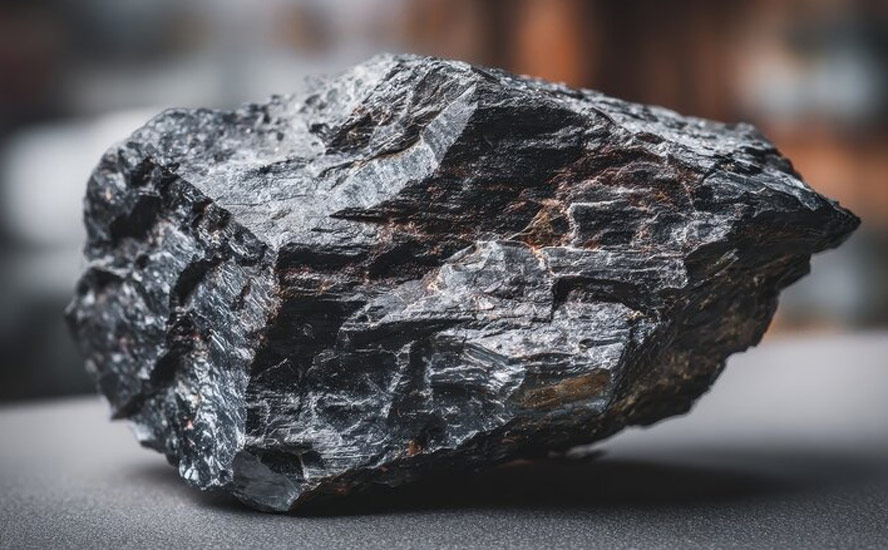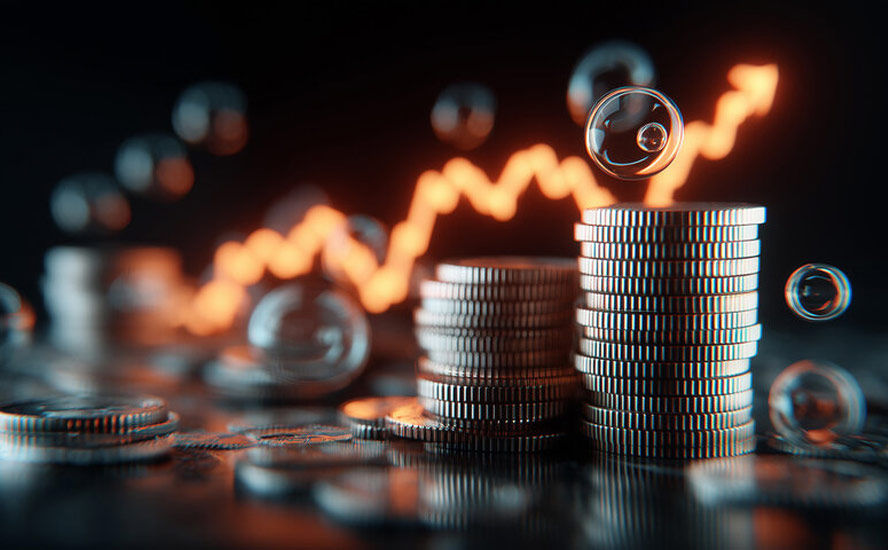EVs get a boost from Big Auto

2019.04.17
Is the age of the gas-powered automobile coming to an end?

Doubtful. In the US, electric vehicles (EVs) only make up about 1% of the new vehicle market, a little better in Canada, at 8%. Things are moving much faster in Europe and Asia.
Norway is the world leader in terms of EV market penetration. In 2018 one out of every three cars sold was a zero-emission vehicle, states Elektrek. That’s just for electric plug-ins. If you add hybrid plug-ins, the penetration rate climbs to 50%. That’s worth emphasizing. Half of all new car buyers in 2018 in Norway bought an EV or hybrid. That’s 50 times more EV purchases than in the US!
China syndrome
But the really impressive numbers come out of China, which commands half of the global marketshare of EVs. Bloomberg reminds us that just two years ago, electric vehicles made up around 1% of all vehicle sales in China – roughly the same as North America and Japan, but half the figure in Europe.
In 2018 the Asian superstar grew its EV market by 83%, selling 1.1 million EVs at 4.2% of country marketshare, twice higher than in 2017, reports InsideEVs. This is greater than the 1 million in global EVs sales in 2017. In other words, Chinese citizens are buying more EVs than the whole world combined.

It’s no wonder. There are now 500 domestic EV manufacturers in China. 500! The handful of US carmakers aiming to get a slice of that market are struggling to keep up, says Quartz in a 2018 article. Chevy is planning to launch 10 EV models in China by 2020 and Tesla is building a plant in Shanghai that will make half a million Teslas a year over the next two years.
And it’s not just the EVs that China controls. According to Bloomberg China has three-quarters of the world’s lithium-ion battery manufacturing capacity, and 50% of the world’s public vehicle-charging infrastructure.


If this was a Formula 1 race, North America would be getting lapped.
The main reason China has so enthusiastically embraced EVs is environmental, as anyone who has breathed its thick, polluted air can attest. A decade of double-digit annual growth, manifested through industrialization, took its toll.
In 2015 the air in China was so bad that it was estimated to contribute to 1.6 million deaths per year. Pollution has since improved, but the Chinese government has ambitious targets. It wants to sell 7 million EVs by 2025, and has encouraged manufacturers and buyers to enter the market by offering subsidies and other incentives. The government recently banned new factories that only make internal combustion engine (ICE) models.
EVs get Trumped
If even a quarter of all countries were going to the lengths China is, in setting up an electrical vehicle industry, the world would be on its way to slowing the unstoppable warming of the planet.
In the United States, EVs are still a niche market targeted at the progressive rich. The vast majority can’t afford an EV, and even if they did, the range is either too small, for long-range commuters/ rural residents, or there’s nowhere to plug it in.
The Trump Administration has shown no interest in the industry. The White House has backed away from EV income tax incentives and the Environmental Protection Agency has been gutted. The EPA has been directed to loosen fuel-economy and emissions requirements for new cars, something that California and other states have refused to abide. In February California’s Air Resources Board agreed to pass its own zero-emission rules.
According to Inside EVs, the Trump Administration was working with auto industry groups to water down federal fuel economy standards even before Trump was inaugurated. Among the most vociferous opponents is Marathon Petroleum. The largest refiner has reportedly teamed up with an anti-environmental regulations group, the American Legislative Exchange Council, to draft pro-industry legislation for state governments. The company was also a major donor to Scott Pruitt, the former EPA Administrator.
Oil interests have coalesced to try and end the federal tax credit for EV purchases, says Inside EVs, with a Wyoming Republican Senator introducing legislation in October to not only abolish the tax credit, but hit EV owners with a user fee since EVs “no longer need the crutch of government assistance,” Inside EVs reported.
Strange bedfellows
Amid this rocky EV landscape in America, I was curious to see a headline saying that one of the largest car companies in the world, Fiat Chrysler, has agreed to give at least a billion dollars to Tesla. Yup, Tesla. These guys are competitors, right?
The payment will reportedly allow Fiat Chrysler Automobiles (FCA) to pool its fleet sales with Tesla to avoid costly new EU emissions rules. The way it works is, the new regulations require new vehicles to emit no more than 95 grams of CO2 per km. The average emissions was 120.5g CO2/km in 2018, but FCA was way over that, at an average 123g.
Not surprising, since FCA currently does not have any zero-emission EVs to offset its ICE lineup. Ironically, the head of its two luxury brands, Alfa Romeo and Maserati, told NBC News last summer that it’s planning on “going after Tesla” in releasing upcoming new EV models.
Instead the company appears to be the white knight riding on his steed to rescue Tesla. Business Insider reminds us that Tesla managed two consecutive quarters of profitability last year for the first time ever, and even paid off a $920 million loan in March. However its mercurial CEO, Elon Musk, also said in February that to sell its Model 3 for a modest (by EV standards) $35,000, it would have to close many of its dealerships and sell cars mainly online. Ouch.
Enter Fiat Chrysler whose $1-2 billion cash injection would, according to the Financial Times, help fund another year’s operations for Tesla. Clearly it’s worth the gamble for FCA to jump into bed with Tesla – despite being an odd choice of partner – to avoid up to $2.3 billion in fines for missing the EU’s emissions targets.
The situation has an analog from an entitlement system mandated on the refining end of the oil business by then-President Nixon’s government, in the 1970s.
The system was put in place to help small refiners to compete against large refining companies like Amoco. Because the large refiners could access low-cost oil, they passed on the savings in the form of cheaper gasoline at their service stations. When the smaller, independent firms faced bankruptcy, the government stepped in and required the large refiners to pay their smaller competitors to compensate them for having to buy more expensive crude. This, understandably, was very unpopular.
In the same way that the entitlement system targeted Big Oil, the EU emissions regulations, which come into effect in 2021, are directed at Big Auto – especially car companies that fail to bring their emissions down, be offering EV models. The Financial Times explains:
Some companies such as VW will produce more electric cars. Others such as FCA and perhaps Daimler Benz will be forced to look for partners with whom to pool their emissions. Firms such as Tesla will be ready, willing, and able to provide the emissions credits but at a rapidly rising price. The oil industry executives will be unable to do anything but watch as larger and larger amounts of cash move to Tesla and other EV manufacturers. These firms will be able to lower the price of their product, sell a larger number of units, and accelerate the decline in sales of internal combustion vehicles. The European market for petroleum products will shrink.
Imagine if California implemented something similar. Its tougher vehicle emissions standards could make high-emissions ICE automakers pay the ultimate price – as they are forced to buy emissions credits from zero-emitters like Tesla, gradually squeezing them out of the market.
Mining-intensive
What’s interesting about this from a mining perspective, is the amount of metals that the shift to vehicle electrification, and other forms of electrification, will take.
For some context, read this article on renewables and EVs by Think Progress.
In it, we learn about a report from the International Renewable Energy Agency (IRENA) which concludes the best way to achieve a “climate-safe future” (global warming under 2 degrees C), is to transition from fossil fuels to electrification of key sectors like transportation and energy generation. No shock there.
The key here is the price of renewables; they’re coming down. According to IRENA, by 2050 an optimistic 68% of electricity would come from wind and solar.
It also expects lower battery prices and better battery performance to drive EV growth, from the current 5 million EVs on the road to a staggering 1 billion by 2050. That, by the way, is a 200-fold increase.
The plan for a decarbonized future also calls for:
- a switch from natural gas-powered heating fuel to solar-run hot water heater and a 16X increase in high-efficiency electric heat pumps.
- Making buildings, industry and transportation more efficient, such as using LED lights or more insulation.
All of this is good. Ahead of the Herd certainly is on board with helping to reduce the amount of carbon that is escaping into the atmosphere and causing a bevy of climate change problems. We’ve written about it. For more read our five-part series on climate change (scroll to the bottom of the link for Parts 1-4)
But the rubber hits the road when it comes to how we are going to come up with all the materials for these vastly expanded renewable energy and electric vehicle sectors.
Consider this: One Tesla car battery uses 45 kg or 100 pounds of lithium carbonate. A billion EVs will require 45 billion pounds of lithium carbonate. The lithium market currency produces about 300,000 tonnes of lithium carbonate equivalent a year (LCE is lithium carbonate or lithium hydroxide, both can go nto EV batteries). To put lithium ion batteries in all of those vehicles would require 3,333 years of current LCE production!
I find it hard to believe predictions of a billion EVs on the road by 2050. Work out the numbers for your self, whether you believe50,000,000 or 10,000,000 or 100,000,000 or a quarter billion. But the truth of the matter is that regardless of what ever number you believe, two things become apparent very quickly. First electrification is happening and it isn’t going to stop. Second, we need a heck of a lot more lithium mined!
Let’s continue on with copper and then rare earths.
A typical EV has four times as much copper as a regular gas-powered vehicle. Over the next decade copper demand is expected to increase between 3 and 5 million tonnes. After that, copper demand for EVs alone could reach 11 million tonnes. The International Copper Association says over 40 million charging ports will be needed over the next 10 years, consuming an extra 100,000 tonnes of copper annually, by 2027. But we are facing a copper deficit as early as 2020.
Imagine a world without copper? There would be no copper wiring, therefore no means of electrifying new buildings, no material for solder, no computers, TVs, circuit boards, semiconductors, microwaves, modems and routers.
The transportation industry is reliant on copper for components of airplanes, trains, cars, trucks and boats. A commercial airliner has up to 190 kilometers of copper wiring, while high-speed trains use up to 10 tonnes of copper per kilometer of track.
In electric vehicles (EVs), copper is a major component used in the electric motor, batteries, inverters, wiring and in charging stations. Without a copper substitute (there is none), the shift from gas-powered cars to EVs would abruptly stop.
Even if we mined every last discovered, and undiscovered, pound of land-based copper, the expected 8.2 billion people in the developing world would only get three quarters of the way towards copper use parity per capita with the US, if we assume 10 billion people by 2050.
Unless new investments arise, existing mine production will drop from 20 million tonnes to below 12 million tonnes by 2034, leading to a supply shortfall of more than 15 million tonnes. That’s because over 200 copper mines are expected to run out of ore before 2035, with not enough new mines in the pipeline to take their place.
The electrification of the transportation sector will also involve significant amounts of rare earths. Every electric vehicle contains the rare earth elements praseodymium, neodymium and dysprosium in permanent magnets needed for the vehicle’s motor.
Demand for the materials that go into these magnets is only going to grow. An example is neodymium. The market for neodymium-iron-boron magnets is estimated at $11.3 billion; demand for neodymium has increased every year since 2015. And with electric vehicle sales expected to grow 24% a year until 2030, it’s a valid question whether there’s going to be enough REE magnet materials to go around.
Another common use of permanent magnets is in the generators of wind turbines. A 2-megawatt wind turbine contains about 800 pounds of neodymium according to the Bulletin of Atomic Sciences. Allied Market Research estimates the CAGR (compound annual growth rate) of wind turbines to be 7.2% from 2017 to 2023.
Conclusion
The world right now is like the Titanic heading towards the iceberg – except we know the berg is there yet do nothing to change course. We know that we need to vastly change the way we go about our daily lives in order to massively decarbonize. But we are frozen, like a deer in the headlights, by the sheer enormity of the task at hand.
One way to make a huge difference is to ditch ICE-powered vehicles and move rapidly, surely, towards EVs. We have the technology, prices are coming down, and people are slowly coming around to the idea.
Institutions like the EU are coming out with clever programs that incent – one might say force – automobile companies to work together in order to avoid crazy-expensive fines. That’s what it takes. You can’t just make the fines a cost of doing business. It’s likely that this sort of program will become popular, so we expect to see more coming. This is one way to drive gas guzzlers out of business, and we wish them well.
But in fixing one problem, we are creating another, and that is a voracious demand for metals that must accompany electrification and a shift to renewables. The mining industry is currently not prepared to meet this demand. We are facing shortages in copper, zinc, lead and lithium. Rare earths are more abundant, but the market for them is 90% controlled by China. If countries outside of China need more rare earths for electrification needs, China has them over a barrel.
The only way to change this situation is to find more of the needed minerals and to mine them. We have three copper companies, one lithium junior and a rare earths mine developer that all have the potential for adding significant tonnage to these under-supplied markets. To learn more visit our front page.
Richard (Rick) Mills
Ahead of the Herd Twitter
Ahead of the Herd FaceBook
Legal Notice / Disclaimer
This document is not and should not be construed as an offer to sell or the solicitation of an offer to purchase or subscribe for any investment. Richard Mills has based this document on information obtained from sources he believes to be reliable but which has not been independently verified. Richard Mills makes no guarantee, representation or warranty and accepts no responsibility or liability as
to its accuracy or completeness. Expressions of opinion are those of Richard Mills only and are subject to change without notice. Richard Mills assumes no warranty, liability or guarantee for the current relevance, correctness or completeness of any information provided within this Report and will not be held liable for the consequence of reliance upon any opinion or statement contained herein or any omission. Furthermore, I, Richard Mills, assume no liability for any direct or indirect loss or damage or, in particular, for lost profit, which you may incur as a result of the use and existence of the information provided within this Report.
Legal Notice / Disclaimer
Ahead of the Herd newsletter, aheadoftheherd.com, hereafter known as AOTH.Please read the entire Disclaimer carefully before you use this website or read the newsletter. If you do not agree to all the AOTH/Richard Mills Disclaimer, do not access/read this website/newsletter/article, or any of its pages. By reading/using this AOTH/Richard Mills website/newsletter/article, and whether you actually read this Disclaimer, you are deemed to have accepted it.

























